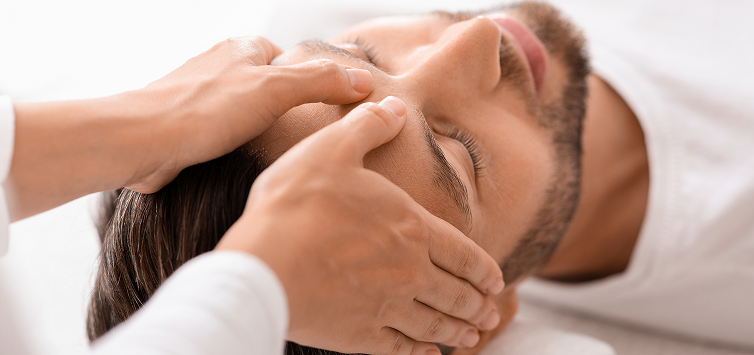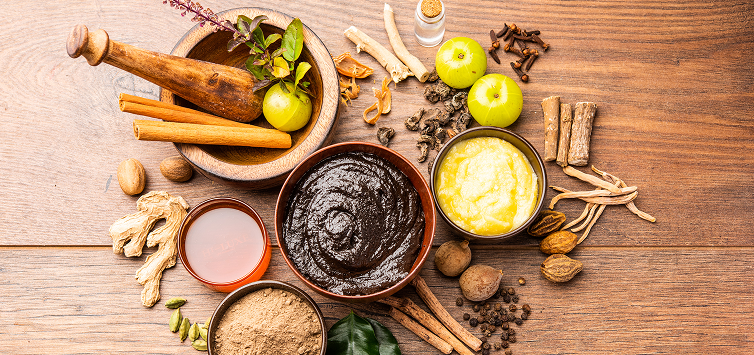Blog
Expert insights for your well-being journey. Your health is our priority.
Ayurvedic Remedies for Headache Relief Naturally
As per reports, over 15% of adults experience severe headaches or migraines, with women being more than twice as likely to suffer compared to men in the US.(1) This staggering statistic highlights a pervasive issue affecting millions of individuals daily.
Conventional treatments for headaches, while effective for many, often come with limitations, including side effects and incomplete relief. As people seek more holistic approaches, Ayurvedic remedies have gained recognition for their potential to offer natural relief.
This blog post explores natural migraine treatments through Ayurvedic headache therapy. It highlights the root causes, remedies, and diet management techniques to alleviate headaches naturally and promote well-being.
Understanding Headaches Through Ayurveda
Ayurveda offers a unique perspective on headaches, emphasizing the balance of the body’s three fundamental energies: Vata, Pitta, and Kapha. According to Ayurvedic principles, headaches are often a result of imbalances among these doshas, each contributing to different headache types.

- Ayurvedic Perspective on Headaches
- Vata Imbalance: Headaches caused by Vata imbalances typically present as dry, sharp, and irregular pain. This type of headache is often accompanied by symptoms like constipation and anxiety.
- Pitta Imbalance: Pitta-type headaches are usually intense, and throbbing, and may be accompanied by nausea and sensitivity to light or heat. This imbalance often relates to an excess of heat or inflammation in the body.
- Kapha Imbalance: Kapha imbalances result in dull, heavy, and persistent headaches, often associated with congestion and lethargy.
- Vata Imbalance: Headaches caused by Vata imbalances typically present as dry, sharp, and irregular pain. This type of headache is often accompanied by symptoms like constipation and anxiety.
- Common Types of Headaches in Ayurveda
Ayurveda categorizes headaches based on their underlying causes and symptoms. Common types include:
- Sadhaka Pitta Headache: Characterized by intense, burning pain and irritability.
- Vataja Headache: Marked by sharp, dry pain often linked with nervous tension.
- Kaphaja Headache: Presenting as a dull, heavy sensation, frequently related to sinus congestion.
- Sadhaka Pitta Headache: Characterized by intense, burning pain and irritability.
- Identifying Your Headache Type for Targeted Relief
Identifying your headache type according to Ayurvedic principles allows for a targeted approach to relief. By understanding whether your headaches stem from Vata, Pitta, or Kapha imbalances, you can tailor your treatment to address the specific dosha involved.
Ayurvedic Home Remedies for Headaches
Ayurvedic remedies offer a range of natural migraine treatments to alleviate headaches. They focus on balancing doshas and addressing root causes to provide lasting relief. Here are some effective methods:
- Herbal Teas and Infusions
- Ginger Tea: Ginger has anti-inflammatory properties that can help reduce headache pain. Simply boil fresh ginger slices in water, strain, and drink.
- Chamomile Tea: Chamomile is known for its calming effects, which can help soothe headaches related to stress and tension.
- Ginger Tea: Ginger has anti-inflammatory properties that can help reduce headache pain. Simply boil fresh ginger slices in water, strain, and drink.
- Application of Cooling Compresses or Herbal Pastes
- Cooling Compress: Applying a cold compress to the forehead can help reduce inflammation and provide relief from Pitta-type headaches.
- Herbal Pastes: A paste made from sandalwood or turmeric can be applied to the temples to alleviate tension and inflammation.
- Cooling Compress: Applying a cold compress to the forehead can help reduce inflammation and provide relief from Pitta-type headaches.
- Massage Techniques for Headache Relief
- Shirodhara: This Ayurvedic headache therapy involves gently pouring warm oil on the forehead, which can calm the mind and relieve stress-induced headaches.

- Champissage (Indian Head Massage): This technique focuses on the head, neck, and shoulders, helping to relieve tension and improve circulation.
- Shirodhara: This Ayurvedic headache therapy involves gently pouring warm oil on the forehead, which can calm the mind and relieve stress-induced headaches.
- Self-Care Practices
- Nasya: This practice involves administering herbal oils into the nasal passages. It can help relieve headaches caused by sinus congestion.
- Ear Candling: Though less common, ear candling can help with headaches related to ear and sinus issues by clearing excess wax and congestion.
- Nasya: This practice involves administering herbal oils into the nasal passages. It can help relieve headaches caused by sinus congestion.
Ayurvedic Herbs and Supplements
Several Ayurvedic herbs and supplements are well-regarded for their ability to alleviate headaches:
- Key Herbs for Headache Relief
- Brahmi (Bacopa monnieri): Known for its calming effects on the nervous system, Brahmi can help reduce stress-related headaches.
- Ashwagandha (Withania Somnifera): This adaptogenic herb helps balance the body’s stress response, which aids in headaches associated with stress and anxiety.
- Shankhpushpi (Convolvulus Pluricaulis): A traditional herb used to improve cognitive function and reduce anxiety, it can be beneficial for Vata-type headaches.

- How to Incorporate Ayurvedic Supplements into Your Routine
Ayurvedic supplements can be taken in various forms, including capsules, powders, and teas. Incorporating these into your daily routine can help maintain balance and prevent headaches. However, it’s essential to consult with an Ayurvedic practitioner to determine the appropriate dosage and combination for your specific needs. - Consulting an Ayurvedic Practitioner
For personalized recommendations, consulting with an Ayurvedic practitioner is crucial. They can provide tailored advice based on your dosha imbalances and specific headache types. This helps ensure that you receive the most effective treatment.
Ayurvedic Diet for Headache Management
Diet plays a significant role in Ayurveda, particularly in managing headaches. An Ayurvedic diet focuses on balancing the doshas through mindful food choices:
- Foods to Include and Avoid for Different Headache Types
- Vata Headaches: Include warm, moist, and grounding foods like soups, stews, and cooked grains. Avoid dry, cold, and raw foods.
- Pitta Headaches: Opt for cooling foods like cucumbers, melons, and leafy greens. Avoid spicy, hot, and acidic foods.
- Kapha Headaches: Incorporate light, stimulating foods like ginger, garlic, and fresh fruits. Avoid heavy, oily, and dairy products.
- Vata Headaches: Include warm, moist, and grounding foods like soups, stews, and cooked grains. Avoid dry, cold, and raw foods.
- Importance of Digestion (Agni) in Headache Prevention
In Ayurveda, proper digestion, or Agni, is essential for overall health and headache prevention. Maintaining a balanced digestive system ensures that toxins do not accumulate, reducing the likelihood of headaches. - Sample Ayurvedic Meal Plans for Headache Relief
- Breakfast: Warm oatmeal with a sprinkle of cinnamon and fresh fruits.
- Lunch: A hearty lentil soup with vegetables, served with quinoa.
- Dinner: A light vegetable stew with basmati rice and a side of steamed greens.
- Breakfast: Warm oatmeal with a sprinkle of cinnamon and fresh fruits.
Conclusion
Ayurvedic remedies offer a holistic approach to headache relief, balancing the body’s doshas and addressing the root causes of pain. Individuals can achieve effective and sustainable relief by incorporating natural treatments such as herbal teas, massage techniques, and a balanced diet.
Embracing Ayurveda for headache relief helps manage headaches and supports overall well-being. For personalized guidance and treatment, consulting with an Ayurvedic practitioner can provide tailored solutions to meet your unique needs.
Statistics Reference: